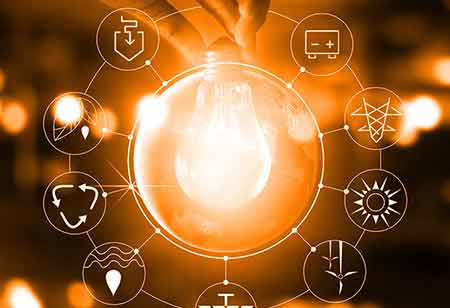THANK YOU FOR SUBSCRIBING
Be first to read the latest tech news, Industry Leader's Insights, and CIO interviews of medium and large enterprises exclusively from Gov CIO Outlook
THANK YOU FOR SUBSCRIBING

By
Government CIO Outlook | Friday, June 10, 2022
Stay ahead of the industry with exclusive feature stories on the top companies, expert insights and the latest news delivered straight to your inbox. Subscribe today.
IoT-enabled devices play an essential role in managing natural calamities.
FREMONT, CA: Technology has changed the way we live, and we cannot ignore the use of innovations in the entire process since technology is vital. With advances in technology, everything looks very easy. Artificial intelligence and the IoT are innovations used to prepare for catastrophically challenged situations.
How is IoT transforming lives?
In recent years, the IoT has become the technology of daily life. Through installed devices, people can connect their everyday devices (kitchen appliances, thermostats, baby monitors, cars) to the internet. The result is smooth communication between people, processes, and things. Human intervention is minimized by using low computing, cloud, big data, analytics, and mobile technologies as media. Other technologies have been used to make the IoT experience more convenient.
Our present disaster management models are based on reactive strategies. With the implementation of IoT-enabled devices, a predictive model is approached to handle upcoming disasters. The IoT devices such as sensors and robots can predict and transform post-disaster management techniques.
IoT is used in various ways through several technologically advanced devices for saving lives.
Monitoring seismic activities
Cutting-edge devices like intelligent sensors are deployed in buildings, bridges, and other public places to collect and analyze relevant information for determining seismic movements. Then, after predicting earthquakes, alerts are sent to authorities and the public at the ion earliest.
Combating forest fires
Forest fires are a known factor of public property and life damages. IoT device implementation helps control these damages well in advance through sensing technology to monitor temperature, humidity, and CO2 levels.
Safeguarding power plants
Disasters can be both artificial and natural, causing considerable losses to industries. AI and IoT sensors can efficiently collect data in real-time of risky environments and study various parameters to evaluate the risk factor. The IoT devices are well programmed to send alerts about such hazards.
Rescuing People
During floods, earthquakes, and hurricanes, search and rescue operations are easily carried out through GPS technology and intelligent traffic management systems. These devices can take us to such locations where human intervention is impossible. For example, unmanned aerial vehicles equipped with cameras, GPS, and AI technology can be used to rescue people stuck at home in floods and other life-threatening emergencies.
Planning for the future
Certain disasters are unavoidable, and predicting them in advance can save lives and property. Artificial intelligence and data analysis tools are used for predictive analytics. These tools help you predict the type, severity, and possible time of a disaster more accurately. Governments worldwide need to leverage IoT in disaster management, considering all the benefits and improvements that IoT brings.
I agree We use cookies on this website to enhance your user experience. By clicking any link on this page you are giving your consent for us to set cookies. More info



